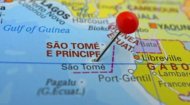|
São Tomé City Profile |
São Tomé City Profile |
São Tomé City Profile | São Tomé City Profile |
|
|

|
While these sectors remain important, the nation is increasingly looking towards tourism and sustainable fishing as key drivers of growth. The city houses the main port, facilitating trade and transportation, and its markets are bustling hubs for local produce, fish, and handicrafts. The presence of government institutions, banks, and the burgeoning tourism sector provides employment opportunities, though the informal economy, particularly street vending and small businesses, also plays a significant role in sustaining livelihoods. The city is the gateway for most international visitors, with the São Tomé International Airport just a couple of miles north of the town and a weekly ferry to Cape Verde bringing in tourists eager to explore the island's natural beauty and unique culture. Despite its charm, São Tomé city, with its population of 53,300 people, like many developing capitals, faces its share of challenges. The infrastructure, while improving, can still be a concern, with issues like reliable electricity and water supply requiring ongoing investment. Unemployment, particularly among the youth, remains a persistent challenge, prompting efforts to diversify the economy and create more job opportunities. The city also grapples with the impacts of climate change, necessitating strategies for coastal protection and sustainable resource management. Furthermore, navigating the complexities of a post-colonial economy and ensuring inclusive development for all its citizens are ongoing endeavours. However, the resilience and ingenuity of the Santomean people shine through, as they actively work towards overcoming these obstacles and building a brighter future for their capital. The rhythm of daily life in São Tomé city is dictated by the tropical sun and the gentle pace of island living. Mornings often begin with the aroma of freshly brewed coffee wafting from local cafes and the sounds of vendors setting up their stalls in the Mercado Municipal. This central market is a sensory delight, a kaleidoscope of colours, scents, and sounds where locals haggle over fresh fish, vibrant fruits like papayas and bananas, and an array of local vegetables. Fishermen bring in their morning catch, their weathered boats bobbing in the harbour, a picturesque scene that captures the essence of coastal existence. As the day progresses, the city awakens to its administrative and commercial functions. Government offices buzz with activity, and small businesses open their doors. The late afternoon sees a shift in pace as the heat subsides, with residents gathering in public squares, children playing, and friends catching up over a drink. Evenings are often spent at local restaurants, savouring fresh seafood and Santomean specialities, or enjoying the lively atmosphere of bars with local music. For the local residents, the city presents a spectrum of housing reflecting its history, economic realities, and cultural influences. In the more established neighbourhoods can be found colonial-era buildings, often characterised by their pastel-colored facades, high ceilings, and wooden shutters. These are interspersed with more modern constructions, from practical, no-frills apartment blocks to individual family homes that may feature more contemporary designs. For tourists, São Tomé city and its surroundings cater to a variety of travel styles and budgets. For those seeking an authentic and immersive experience, guesthouses, often run by local families, offer a warm welcome and a chance to connect with the community. These establishments typically provide comfortable rooms with essential amenities, and breakfast is often an introduction to local flavours. For travellers desiring a bit more space and privacy, self-catering apartments are becoming increasingly available. These options allow guests to prepare their own meals, perhaps utilising fresh produce from the local markets, and offer a home-away-from-home feel. For those looking for a more luxurious or resort-style experience, São Tomé boasts a selection of hotels, ranging from boutique properties nestled within the city itself to more expansive lodges situated on the outskirts, often with stunning ocean views or surrounded by lush greenery. These accommodations typically offer a wider array of services, including restaurants, swimming pools, and organised tours, ensuring a comfortable and memorable stay for every visitor exploring the unique beauty of São Tomé. For tourists, the city offers a surprising array of attractions that draw visitors and provide residents with places for leisure and cultural immersion. The aforementioned Presidential Palace and São Sebastião Fort are must-visit historical sites. Beyond these, the National Museum, housed in an old slave market, offers a poignant and informative look at the island's history. The picturesque waterfront, with its sweeping views of the ocean, is perfect for leisurely strolls, especially at sunset. For those seeking a taste of local life, a wander through the bustling Mercado Municipal is an essential experience. The city also serves as a launching point for exploring the island's natural wonders. Day trips can be organised to nearby beaches like Praia das Conchas or Praia Piscina, offering pristine sands and clear waters perfect for swimming and snorkelling. The lush botanical gardens, showcasing the island’s rich biodiversity, provide a tranquil escape. For a deeper dive into the island's agricultural past, visiting nearby cocoa plantations, known as roças, offers a fascinating insight into the cultivation and production of this prized commodity. |








